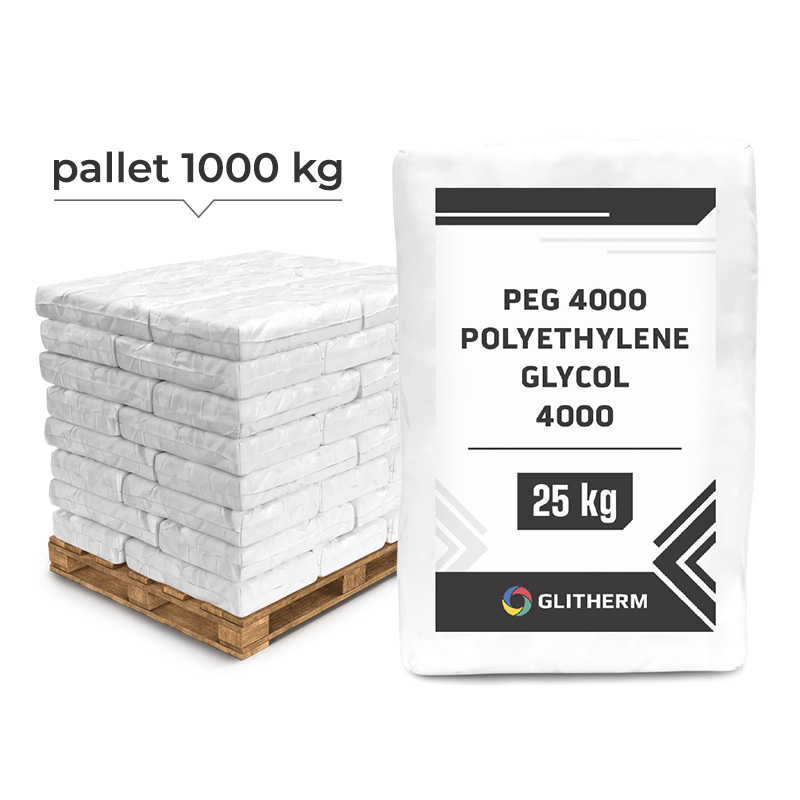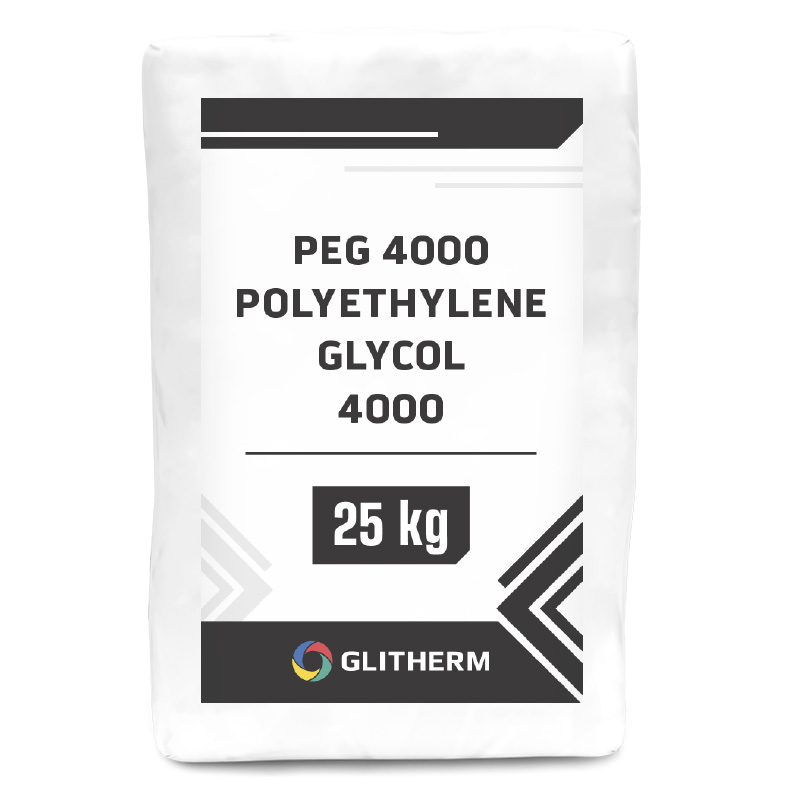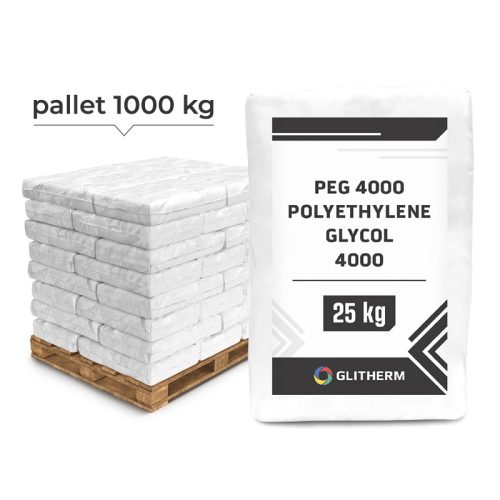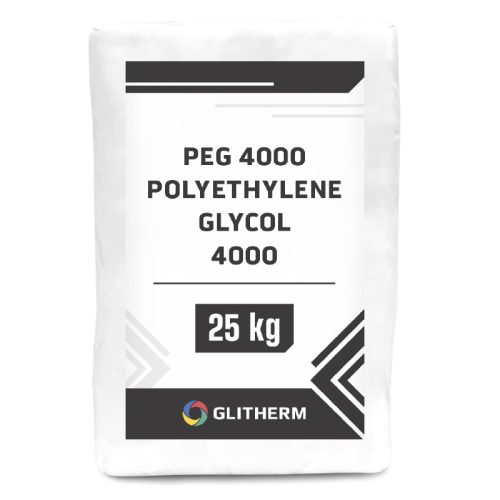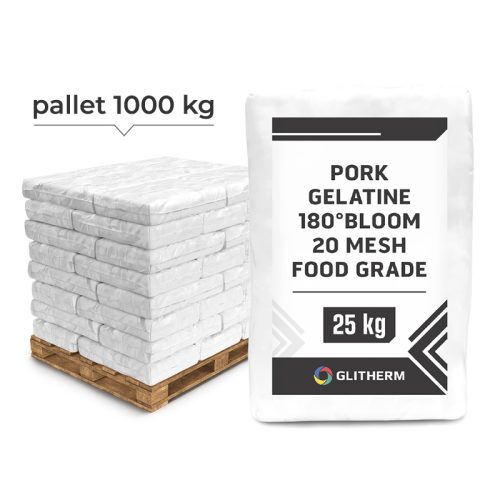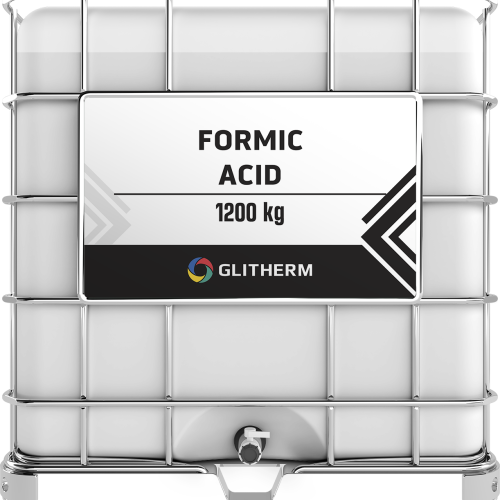Polyethylene glycol 4000 (PEG 4000) is an organic compound, a polymer from the group of polyethers, a product of the condensation of ethylene oxide and ethylene glycol. The numeric suffix indicates the average molecular weight of the product. Polyethylene glycol 4000 is a pale, colorless, transparent substance in the form of waxy flakes. Not classified as a toxic substance according to Classification according to Regulation (EC) No. 1272/2008 [CLP/GHS]. It is approved as a drug additive in several pharmacopoeias. Polyethylene Glycol 4000 (PEG 4000) is soluble in water and many organic solvents, including alcohols, glycols, glycol ethers, ketones and aromatic hydrocarbons. However, it is poorly soluble in aliphatic hydrocarbons and ethers.
PEG polyethylene glycol is used as a solvent, emulsifier and viscosity increasing agent for liquid cosmetics and drugs. In addition, it is used in the production of synthetic lubricants, machining oils, hydraulic fluids and polishing agents. Indispensable in the production of synthetic resins, plasticizers and adhesives. Starting material for obtaining polyethylene glycol esters. Used in the paper, rubber, textile, printing and metal industries.
As a curiosity, its use in underwater archeology can be cited, where it is used as a preservative for wooden artefacts excavated from wet archaeological sites. It then takes the form of a water-soluble wax product that slowly penetrates deep into the wood and displaces water, thus preventing shrinkage and cracking of the wood.
Polyethylene Glycol 4000 (PEG 4000) is used as a catalyst or reagent in chemical synthesis processes on an industrial scale, e.g. in two-phase reactions.
The automatically translated description is binding in the Polish version.

